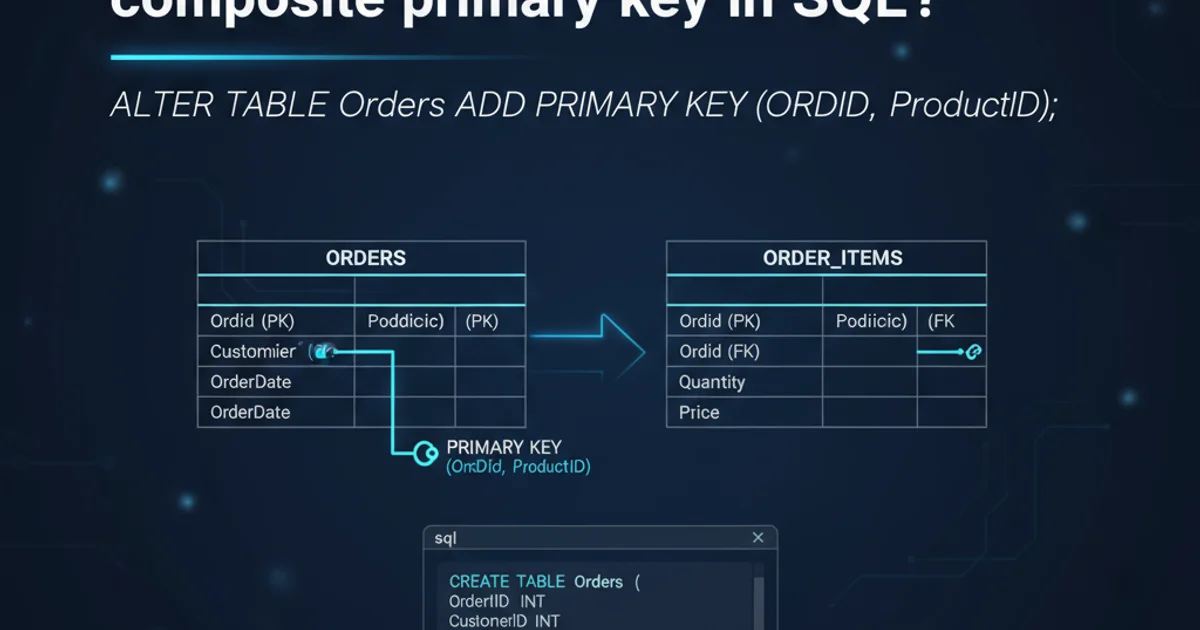In C#, what does "Customer cust = new Customer();" do?
Categories:
Understanding 'Customer cust = new Customer();' in C#

Explore the fundamental C# statement Customer cust = new Customer(); to understand object instantiation, memory allocation, and constructor execution.
In C#, the line Customer cust = new Customer(); is a cornerstone of object-oriented programming. It's a seemingly simple statement that encapsulates several crucial concepts: declaring a reference variable, instantiating an object, allocating memory, and executing a constructor. Understanding each part of this statement is fundamental to writing effective and robust C# applications.
Deconstructing the Statement
Let's break down the statement Customer cust = new Customer(); into its individual components to understand what each part signifies and how they work together to create an object.
flowchart LR
A["Customer cust"] --> B["Declaration: Reference Variable"];
B --> C["=": Assignment Operator];
C --> D["new Customer()": Object Instantiation];
D --> E["Memory Allocation"];
E --> F["Constructor Execution"];
F --> G["Return Reference"];
G --> B;
style A fill:#f9f,stroke:#333,stroke-width:2px
style D fill:#bbf,stroke:#333,stroke-width:2pxFlowchart illustrating the steps involved in object instantiation
1. Customer cust - Declaration of a Reference Variable
The first part, Customer cust, declares a variable named cust. This variable is not the object itself, but rather a reference (or pointer) that can hold the memory address of an object of type Customer. Think of it like an empty box labeled 'Customer' that is ready to hold a specific customer's details. At this point, cust is initialized to null, meaning it doesn't point to any object in memory yet.
Customer cust; // Declares a reference variable 'cust' of type Customer. It is currently null.
Declaring a reference variable in C#
2. new Customer() - Object Instantiation and Memory Allocation
The new keyword is crucial. It performs two primary actions:
- Memory Allocation: It allocates enough memory on the heap to store a new
Customerobject. The heap is a region of memory used for dynamic memory allocation, where objects live until they are no longer referenced and are eventually collected by the garbage collector. - Constructor Invocation: After allocating memory, the
newkeyword calls the constructor of theCustomerclass. A constructor is a special method that initializes the newly created object. If no explicit constructor is defined in theCustomerclass, C# provides a default parameterless constructor that initializes all fields to their default values (e.g.,0for numeric types,falsefor booleans,nullfor reference types).
The new Customer() expression evaluates to the memory address (a reference) of the newly created and initialized Customer object.
public class Customer
{
public int Id { get; set; }
public string Name { get; set; }
// Default constructor (implicitly provided if not defined, or explicitly defined here)
public Customer()
{
Id = 0; // Explicitly initializing, though default would be 0
Name = ""; // Explicitly initializing, though default would be null
Console.WriteLine("Customer object created!");
}
}
// In another part of your code:
Customer newCustomer = new Customer(); // This calls the constructor above.
Example of a Customer class with a constructor
3. = - The Assignment Operator
Finally, the assignment operator = takes the reference (memory address) returned by new Customer() and assigns it to the cust variable. Now, cust is no longer null; it points to the newly created Customer object in memory. Any operations performed on cust will now affect that specific Customer object.
Customer cust = new Customer(); // Combines declaration, instantiation, and assignment
cust.Id = 101;
cust.Name = "Alice Smith";
Console.WriteLine($"Customer ID: {cust.Id}, Name: {cust.Name}");
Assigning the object reference to the variable and accessing its properties
cust is a reference, not the object itself. Multiple reference variables can point to the same object in memory. Changes made through one reference will be visible through all other references pointing to the same object.